In what way
does your media product use, develop or challenge forms and conventions of real
media products?
In
the research stages of the project we decided to go with the Rock genre, we did
this because we thought that it would allow us to have the most creativity as
there aren’t a lot of conventions to stick to that would limit what we could or
couldn’t do. This will allow us to include as many ideas as possible of our
own.
So
once we decided on the genre we could then go onto research previous rock music
videos to look for forms and conventions that we would either use or challenge
in our music video.
But first I did research into genre itself to see exactly what I should be looking for and I found out that Andrew Goodwin says that a form of something and the genre of it are totally different and that they have different conventions that should be stuck to and the conventions for forms are different to the genre of something. The form of something is the thing it is, like a music video is a form and there are certain conventions to stick to when you are making a music video and that’s just to make sure it looks like what it is supposed to be. The genre is the type of music video it is, like pop or indie is the type of music video, and then there are specific conventions to stick to that makes sure that your music video is pop/indie.
But first I did research into genre itself to see exactly what I should be looking for and I found out that Andrew Goodwin says that a form of something and the genre of it are totally different and that they have different conventions that should be stuck to and the conventions for forms are different to the genre of something. The form of something is the thing it is, like a music video is a form and there are certain conventions to stick to when you are making a music video and that’s just to make sure it looks like what it is supposed to be. The genre is the type of music video it is, like pop or indie is the type of music video, and then there are specific conventions to stick to that makes sure that your music video is pop/indie.
Conventions for
Music Videos:
So
first I thought it would be best to look into the conventions of music videos
as a form and I found many things and the conventions I took from it were: 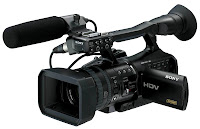 ·
·
·
Camera movement: The movement of the camera
is used to follow the trace the artist or band. Camera movements include tilts,
pans, tracking and crane shots.
·
Mise-en-scene: This refers to the
arrangement of performers and props on stage or in a scene for a production of
a music video or any other media text. Mise-en-scene put importance on the
representation of something.
·
Editing: Jump cuts us the predominant editing
technique used in music videos. This is because this allows a sudden change
from one scene to another. Similarly, transitions such as fade and dissolve are
very common in music videos as they create a different effect to cuts.
·
Lighting: Lighting plays a big part in the production
of music videos as they can create the mood for the whole video, using black
and white lighting can have a depressive/angry mood like the Neyo video ‘Mad’ black
and white lighting was used to create a depressive looking mood and it matched
sad, depressive mood of the song itself. Some music videos are black and white
which help emphasise a particular mood and some videos have artificial lighting
which put the artist(s) in an enhanced look.
·
Sound:
Sound is mainly vocals or the song but in some cases like in Michael Jackson’s
thriller there is a lot of different effects and sounds going on that make the
video look more like a short film than a music video.
·
Props:
These are a vital in aiding to add to the scene and create significance on
particular objects or people
I
found these conventions helpful whilst coming up with ideas as I knew what I
should/shouldn’t involve in the music video, and how to make it look like the
music video I want it to be.
I
then went to look at conventions for rock music videos specifically to see what
would be expected of my music video if it would contend with other rock music
videos.

I
went through a few of the links but I couldn’t find any proper lists so instead
I searched ‘rock music video conventions’ to see what came up.
And
then I could watch music videos on YouTube and see whether the conventions fit
the specific music videos.
Conventions for rock music videos:
·
Camera Shots: A wide variety of shots
are used to create an effective pace to match the music. Close ups are normally
used to show emotion or to show how the singing in the track matches the lip
synching.
·
Camera Movements: Camera movement in rock
music is often used to a higher extent than in music videos that tell a story.
Often in band performance videos there are a lot of different camera shots but
they can lack in actual camera movement.
 ·
·
·
Editing: Due to the often fast paced nature of rock music,
editing is mainly done in form of straight cuts in time to the rhythm. Fade
in/outs are also often used at the beginning and ends of more atmospheric
videos.
Conventions we stuck to
There
are many conventions that we chose to stick to whilst creating our music video
and this is because we wanted people to watch it and know that they are
watching a music video and not a trailer to a movie or anything like that.Camera- We used a variety of shots so that we could make it look interesting and so that the audience don’t get bored and turn it off, we decided to use shots like close ups, mid shots, long shots and then some movement shots like panning and tracking, but these ones didn’t turn out the way that we wanted them to while we were filming the performance and when we looked back at them they weren’t good enough to include in the music video, so we chose not to use them. We did however get movement shots from the GoPro camera that we used to film the narrative shots; this gave us movement shots, which meant that we didn’t really need to use the movement shots from the performance filming. It gave us the opportunity to use as many different shots as possible from the performance filming. The amount of different shots we have used will be visually appealing to the audience as it won’t be all the same, and boring, it will make them excited to see what’s coming next.
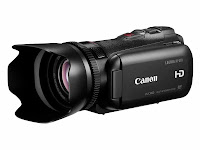.jpg)
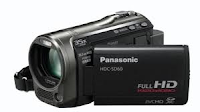.png)
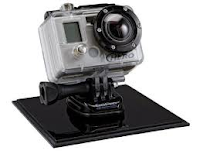
Lighting-
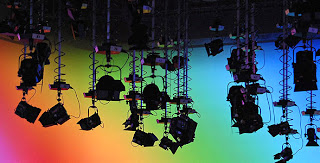 We chose to use the TV
studio lighting(image to the right) for the performance filming to have a more
studio like effect, this is to show that the band are good enough to be
performing in a proper studio, they aren’t just practicing in their garage or
anything like that. We used the lighting but we chose to use the lights without
any colour filters on them because we didn’t want it to look childish and like
a pop video, as the rock genre doesn’t really call for lots of bright colourful
lights. That is the main reason we chose to stick with white lights because we
wanted to stick to the genre conventions as much as possible at this point. The
lighting we used for the narrative scenes was normal everyday lighting, there
wasn’t any special effects of filters added to these scenes, we wanted to keep
it like this because then the audience could see a prominent difference between
the narrative and performance shots, and by the everyday lighting looking
boring compared to the performance TV studio lighting it’s obvious that the
late band member is missing out on something and by the time that he actually
arrives to the studio, all the lighting is out and there is just one spotlight
showing that no one is there, this is boring and shows that he missed out on
the excitement.
We chose to use the TV
studio lighting(image to the right) for the performance filming to have a more
studio like effect, this is to show that the band are good enough to be
performing in a proper studio, they aren’t just practicing in their garage or
anything like that. We used the lighting but we chose to use the lights without
any colour filters on them because we didn’t want it to look childish and like
a pop video, as the rock genre doesn’t really call for lots of bright colourful
lights. That is the main reason we chose to stick with white lights because we
wanted to stick to the genre conventions as much as possible at this point. The
lighting we used for the narrative scenes was normal everyday lighting, there
wasn’t any special effects of filters added to these scenes, we wanted to keep
it like this because then the audience could see a prominent difference between
the narrative and performance shots, and by the everyday lighting looking
boring compared to the performance TV studio lighting it’s obvious that the
late band member is missing out on something and by the time that he actually
arrives to the studio, all the lighting is out and there is just one spotlight
showing that no one is there, this is boring and shows that he missed out on
the excitement. Mise-en-scene-
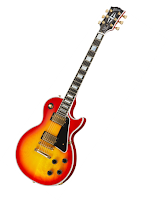 The
props and costumes used were all in line and following the conventions that we
had found out about, we used big drum kits, electric guitars, amps and mics as
props, so that the band would be represented in the best possible way,
otherwise they would look unprofessional and like amateurs, this would not make
them look good to the target
The
props and costumes used were all in line and following the conventions that we
had found out about, we used big drum kits, electric guitars, amps and mics as
props, so that the band would be represented in the best possible way,
otherwise they would look unprofessional and like amateurs, this would not make
them look good to the target 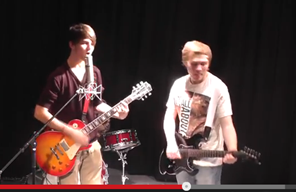 there
is a sense of passion in the music but also a
there
is a sense of passion in the music but also a hint of danger as there is shouting and gestures that
could suggest anger. The red/orange/yellow on the guitar also matches the digipak; this will show that they are part of one brand identity and that there is a theme to the band.
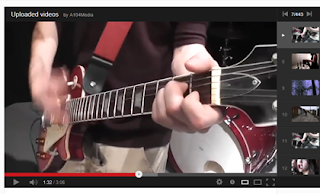 The dark red colour on the edge of the guitar and on the drums matches, this is good because it shows that we had thought about these things prior to the filming and that we wanted everything to match and look like they all belong to the same brand.
The dark red colour on the edge of the guitar and on the drums matches, this is good because it shows that we had thought about these things prior to the filming and that we wanted everything to match and look like they all belong to the same brand. 
 The
costumes that the boys wore were all casual and this gave the video a laid back
feeling and atmosphere, this kind of clothing made it not look too serious and
this is how we thought of the idea to add some comedy into the video, as there
wasn’t too much of a serious feeling so there was room to be able to add some
comedy which isn’t normally seen in rock videos, but we chose to do it because
we thought it would look good and now it’s been added to the video I think that
we were right to add it.
The
costumes that the boys wore were all casual and this gave the video a laid back
feeling and atmosphere, this kind of clothing made it not look too serious and
this is how we thought of the idea to add some comedy into the video, as there
wasn’t too much of a serious feeling so there was room to be able to add some
comedy which isn’t normally seen in rock videos, but we chose to do it because
we thought it would look good and now it’s been added to the video I think that
we were right to add it.
No comments:
Post a Comment